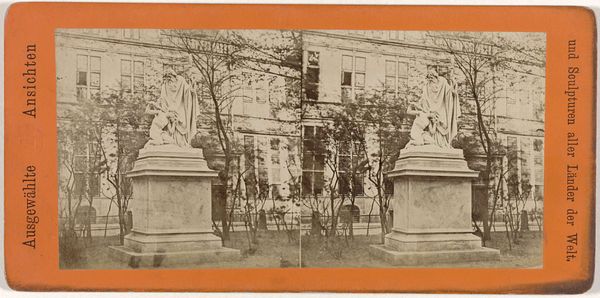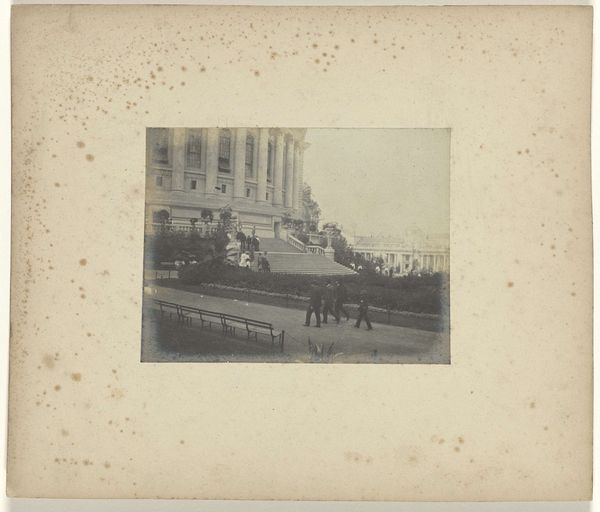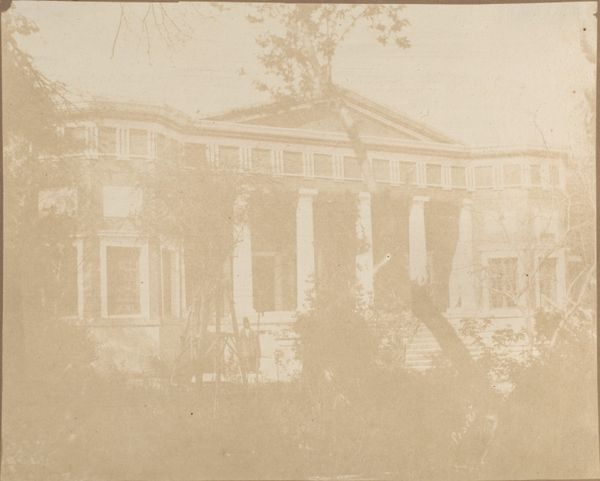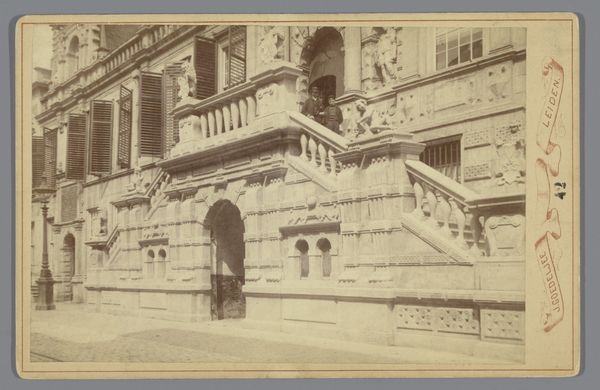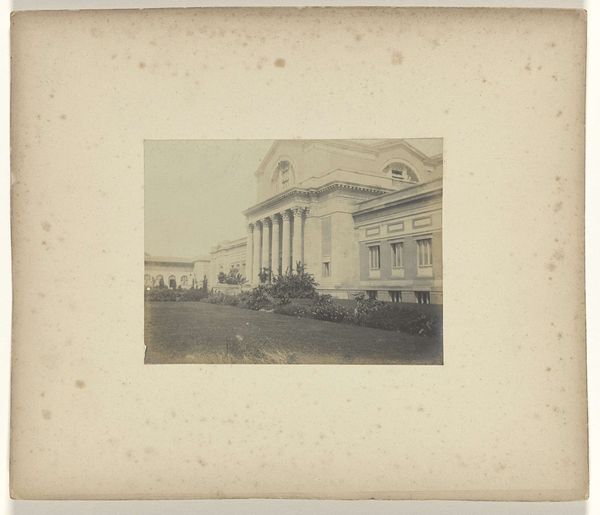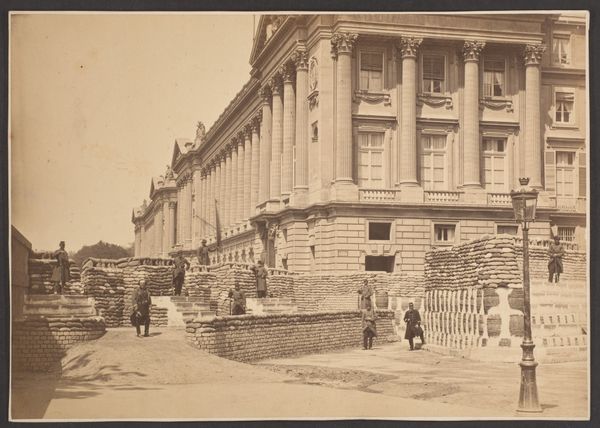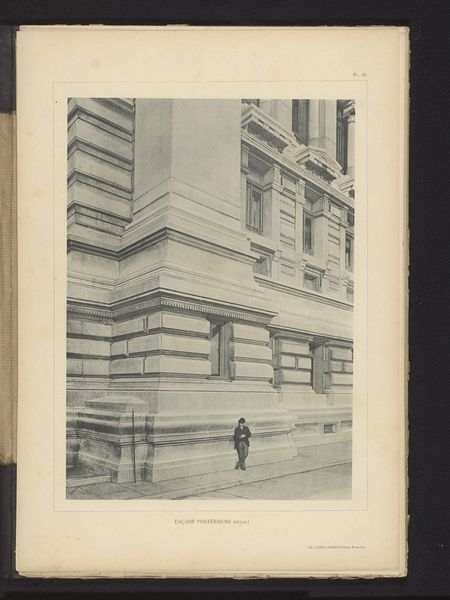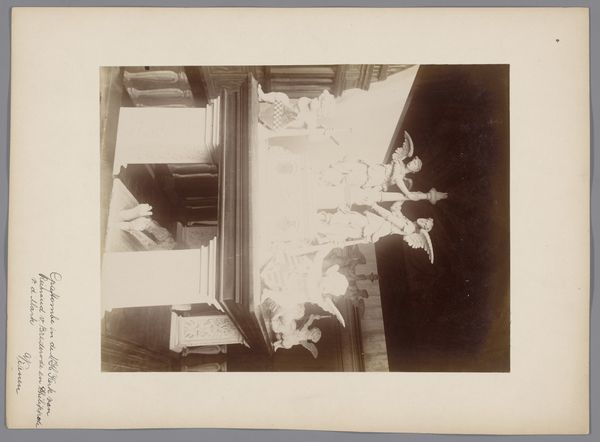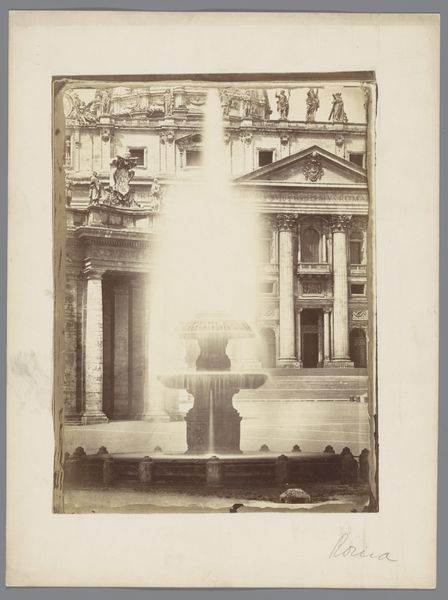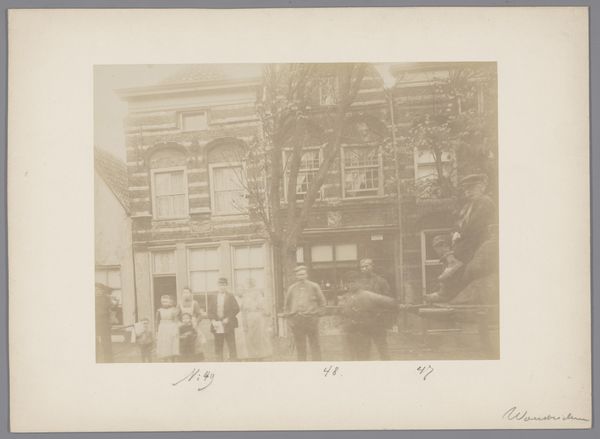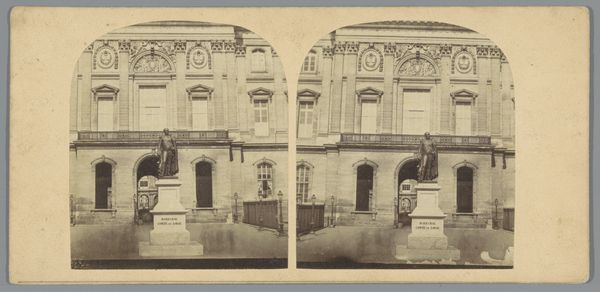
daguerreotype, photography
#
daguerreotype
#
photography
#
romanticism
#
cityscape
Dimensions: Sheet: 7 3/8 × 8 7/8 in. (18.8 × 22.6 cm) Image: 6 3/4 × 8 1/4 in. (17.1 × 20.9 cm)
Copyright: Public Domain
Curator: Standing before us is William Henry Fox Talbot's "Carclew House," captured in 1841 using the daguerreotype process. Editor: The silvery tones give it a strangely ethereal feel. It's not a crisp image, more of a hazy dream of a stately home. The weight of those neoclassical columns really comes through though. Curator: Indeed. Talbot, a pioneer of photography, made this image as part of his effort to document country estates, part of a Romantic-era fascination with rural gentry. It tells us a great deal about 19th-century British society and its obsession with social class. Editor: The composition really emphasizes that hierarchical perspective, doesn’t it? Look how the figures on the ground almost fade away, while those on the balcony seem to observe them from a raised, untouchable plane. Curator: Precisely. Talbot's selection of the subject matter and his framing invites the viewer to observe the social strata embodied by the architecture and inhabitants of Carclew. Editor: And that textural richness! The way the light dances across the stonework, each pillar a subtly different shade, there is depth there despite the apparent flatness. What is really interesting to me, in particular, is the angle that captures the classical composition of pillars and balcony as it converges with people milling about as the photo fades at the bottom. The texture contrasts against what looks like pure shapes, geometric patterns on stone. Curator: What seems like fading at the bottom of the photograph is attributable to the nature of the medium, as early photographic processes were often subject to such imperfections, artifacts really. It reminds us of the limits of technological ability at the time and allows a peek into the challenges of representing reality faithfully. Editor: So the limitations paradoxically contribute to the meaning! A compelling insight. Curator: Yes, the picture opens up conversations regarding power dynamics in that era. We begin to question the social roles each class must conform to while asking questions about their identities, something we wouldn’t typically gather without a lens to the photograph and Talbot’s genius. Editor: "Carclew House" makes us consider not only the image but also what’s left out of it, doesn’t it? Thank you for unveiling some more meaning for me today.
Comments
No comments
Be the first to comment and join the conversation on the ultimate creative platform.
